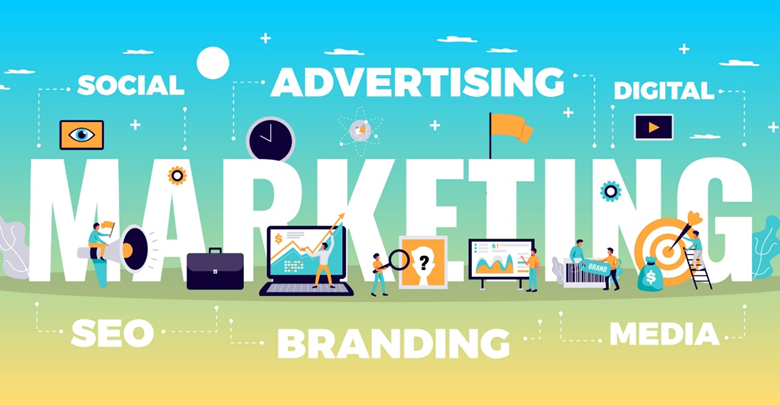The Ultimate Guide to Digital Marketing in 2025 Trends and Strategies

“How can we truly connect with our audience in an ever-evolving digital world?” This question lies at the heart of digital marketing in 2025. In this ultimate guide, we explore cutting-edge trends and strategies that are redefining the landscape, from harnessing AI and machine learning to create highly personalized marketing campaigns, to optimizing for the rising prominence of voice and visual searches.
Dive into the innovative use of augmented reality to boost user engagement, understand the critical importance of data privacy and ethical marketing practices, and master omnichannel strategies that ensure seamless customer journeys. Whether you’re a seasoned marketer or just starting out, this comprehensive guide provides the insights and tools you need to stay ahead in the dynamic realm of digital marketing.

Leveraging AI and Machine Learning for Personalized Marketing
Harnessing the power of Artificial Intelligence (AI) and Machine Learning (ML) has revolutionized the landscape of personalized marketing. These advanced technologies enable marketers to dissect vast amounts of consumer behavior data, allowing for the creation of highly tailored marketing strategies that resonate with individual preferences. By analyzing patterns and predicting future behaviors, AI and ML tools provide unparalleled insights that drive more effective and efficient marketing campaigns.
- Predictive Analytics: Forecasting future trends and consumer actions to make proactive marketing decisions.
- Chatbots and Virtual Assistants: Enhancing customer engagement through real-time, personalized interactions.
- Personalized Content Recommendations: Delivering customized content to users based on their unique preferences and behaviors.
- Automated Email Marketing: Creating and sending targeted email campaigns that adapt to individual user responses.
- Customer Segmentation: Dividing the audience into distinct groups for more precise and effective marketing efforts.
Numerous brands have successfully implemented AI-driven personalized campaigns to boost engagement and conversions. For instance, Netflix utilizes ML algorithms to recommend shows and movies tailored to each user’s viewing history, significantly enhancing user satisfaction and retention. Similarly, Amazon leverages predictive analytics to suggest products that align with individual shopping habits, driving higher sales and customer loyalty. These examples underscore the transformative impact of AI and ML in crafting personalized marketing experiences that meet and exceed consumer expectations.
The Rise of Voice and Visual Search Optimization
In the ever-evolving landscape of digital marketing, staying ahead means embracing the shift towards voice and visual search. Traditional text-based searches are no longer the only game in town. With the rise of smart assistants like Alexa and Siri, voice search has surged, demanding that brands optimize their content for natural language queries. Similarly, the explosion of platforms like Pinterest and Instagram has elevated visual search as a critical component of user engagement.
Comparing traditional SEO with voice and visual search SEO reveals distinct strategies. While traditional SEO focuses on keyword density and meta descriptions, voice search optimization prioritizes conversational language and long-tail keywords. On the other hand, visual search SEO emphasizes image quality, alt text, and structured data to ensure images are easily discoverable. This shift requires marketers to rethink their approaches and adopt more dynamic optimization techniques.
Take, for example, Sephora, a leader in the beauty industry, which has excelled in visual search by integrating their app with image recognition technology, allowing customers to find products by simply snapping a photo. Similarly, Domino’s Pizza leverages voice search by enabling customers to place orders through smart home devices, streamlining the purchasing process. These case studies highlight how embracing voice and visual search not only enhances user experience but also drives business growth in the digital age.

Integrating Augmented Reality Experiences in Campaigns
In the dynamic realm of digital marketing, augmented reality (AR) stands out as a revolutionary tool to amplify user engagement and brand interaction. By seamlessly blending the digital with the physical world, AR offers immersive experiences that captivate audiences and differentiate your brand from the competition. Imagine a beauty brand allowing customers to virtually try on makeup through their smartphones, enhancing the shopping experience and driving higher conversion rates.
Implementing AR in your marketing strategy requires a strategic approach. Start by defining clear objectives—whether it’s increasing brand awareness, boosting sales, or enhancing customer experience. Next, choose the right AR platform that aligns with your goals and target audience. Integrate AR features into your existing marketing channels, such as social media campaigns or interactive advertisements, to ensure a cohesive user journey. The table below compares popular AR tools to help you make an informed decision:
| AR Tool | Features | Best For |
| ZapWorks | Interactive AR experiences, robust analytics | Enterprise-level campaigns |
| Blippar | Visual recognition, 3D content creation | Retail and e-commerce |
| Unity | Cross-platform AR development, extensive asset store | Custom, immersive experiences |
Data Privacy and Ethical Marketing Practices
In the age of digital supremacy, data privacy isn’t just a buzzword—it’s the cornerstone of consumer trust. When customers know their personal information is handled responsibly, they’re not just more likely to engage; they become loyal advocates. Ignoring this can lead to massive reputation damage and legal repercussions that no savvy marketer wants to face.
Adhering to ethical data usage is non-negotiable. Implementing best practices like transparent data collection, obtaining clear consent, and ensuring robust data security measures are essential. Avoid the pitfalls of data breaches and shady data selling by prioritizing integrity in every campaign. This not only safeguards your business but also fosters a trustworthy relationship with your audience.
Brands like Apple and Microsoft set the bar high in data privacy, demonstrating that ethical practices can coexist with cutting-edge marketing. By taking cues from these leaders, businesses can implement strategies that respect consumer privacy while still driving impressive marketing results. Embracing these principles today ensures a sustainable and respected presence in the competitive digital landscape of 2025.
Omnichannel Strategies for Seamless Customer Journeys
Embracing an integrated omnichannel approach revolutionizes how businesses interact with their customers. By unifying various channels, companies can ensure a consistent and personalized experience across all touchpoints. This not only enhances customer satisfaction but also drives loyalty and increases conversion rates.
To develop an effective omnichannel strategy, follow these essential steps:
- Understand Your Customer: Analyze customer behavior and preferences across different channels.
- Integrate Your Platforms: Ensure all channels—online and offline—are connected and communicate seamlessly.
- Personalize Interactions: Use data to tailor experiences and offers to individual customer needs.
- Ensure Consistency: Maintain a uniform brand message and quality across all platforms.
- Measure and Optimize: Continuously track performance metrics and refine strategies accordingly.
A standout example of successful omnichannel implementation is Starbucks. Their mobile app integrates seamlessly with in-store experiences, allowing customers to order ahead, earn rewards, and receive personalized offers. This integration has led to increased customer engagement and boosted sales significantly.
| Feature | Traditional Channels | Omnichannel Approach |
| Customer Data Integration | Data siloed across departments | Unified customer profiles accessible across all channels |
| Personalization | Basic segmentation | Advanced, real-time personalization based on comprehensive data |
| Customer Experience | Inconsistent interactions | Seamless and consistent experience across all touchpoints |

Frequently Asked Questions
How can businesses effectively integrate AI into their existing marketing strategies?
Integrating AI into existing marketing strategies involves identifying key areas where AI can add value, such as customer segmentation, predictive analytics, and content personalization. Businesses should start by leveraging AI tools that align with their marketing goals, provide training for their teams, and continuously analyze performance to refine AI-driven initiatives. Partnering with AI solution providers can also facilitate a smoother integration process.
What are the key differences between optimizing for voice search and traditional text-based SEO?
Optimizing for voice search focuses on natural language and conversational queries, often using longer and question-based phrases. It also emphasizes local SEO, as many voice searches have local intent. Traditional text-based SEO, on the other hand, typically targets shorter, keyword-focused queries and may prioritize different ranking factors. Additionally, voice search optimization requires ensuring that content is easily readable by voice assistants, often necessitating structured data and schema markup.
What are the best practices for ensuring data privacy in digital marketing?
Best practices for ensuring data privacy include obtaining explicit consent from users before collecting their data, being transparent about data usage, implementing robust security measures to protect data, and adhering to relevant data protection regulations such as GDPR and CCPA. Additionally, businesses should regularly audit their data practices, provide users with easy options to opt-out, and minimize data collection to only what is necessary for marketing purposes.
How can augmented reality enhance customer engagement in digital campaigns?
Augmented reality (AR) can enhance customer engagement by providing interactive and immersive experiences that allow users to visualize products in their real-world environment, engage with dynamic content, and participate in unique brand experiences. For example, AR can enable virtual try-ons, interactive product demos, and gamified marketing activities, making the customer journey more engaging and memorable, which can lead to higher conversion rates and brand loyalty.
What steps should a company take to develop a successful omnichannel marketing strategy?
To develop a successful omnichannel marketing strategy, a company should start by understanding their customer journey and identifying all touchpoints across various channels. Next, ensure consistent messaging and branding across all platforms. Integrate data from different channels to gain a unified view of the customer, and leverage automation tools to manage interactions seamlessly. Additionally, personalize marketing efforts based on customer data, continuously analyze performance metrics, and remain adaptable to evolving consumer behaviors and technologies.





